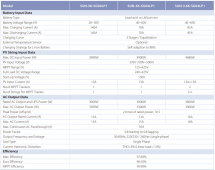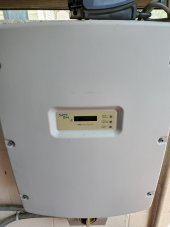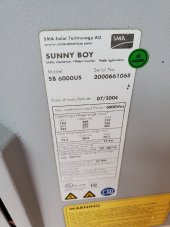I know I said this above but for the sake of others coming along who may read this, from an installer's point of view, it may not be prudent to directly compare any of the current MPP/Voltronic lineup (LVX6048/LV6548) to a Deye hybrid inverter. Particularly on price as they are built to different standards. I'm not saying anyone is or running down the MPP/Voltronic inverters whatsoever, I'm just saying a Deye inverter is much more akin to a good European inverter (SMA/Victron etc) than any of your average Chinese inverters in spite of the fact they are made in China. The internal architecture is significantly different (I covered this at length in a previous post) than your average Chinese design, making them superior and more efficient in a number of ways. Besides that, they are built on high-end Panasonic parts etc which drive up the cost of manufacturing significantly.
The THD on a Deye is rated at less than 3%. For a lot of the Chinese inverters, IMHO, they don't build a large inverter and derate it like Deye does. They build a 6KW for example and sell it as a 6KW. This means the THD is going to get bad fast as you load it. With an oversized inverter, the THD will not fall off nearly as quickly as you reach the rated operational maximum. I'm not saying MPP does this but the MPP inverters don't even have a THD rating making them questionable to me for several uses IMHO. I see off-grid users who didn't pay much for their inverter but see their appliances fail sooner than they should or at least need to be repaired more often... Makes a person wonder.
The eff of the LVX6048/LV6548 is rated at between 91% and 93%. That's worse than your average high-end LF inverter.
Again, I'm NOT bashing on MPP inverters. I just wanted to make clear there is more than just a price difference between them and Deye.
Attached is the latest Deye manual.
I built my setup based on research and info from many folks on this forum, along with multiple Youtube channels like off grid garage, DanF, LtDan, and DMI inc.
I installed dual MPP LV6548's, and so far so good. I liked what I saw on DMI inc's channel as far as reliability of the MPP inverters.
So far, no issues. I have the great fortune to have two complete installs at two different houses. One in NY running MPP, and one in Charleston running SMA full time since 2008. My MPP install started this year, and I am not even finished adding more battery banks yet. It will end up with 50KW of Lifepo4, backed up by a 20KW generator.
I will let you know if I run into issues with the MPP units, but so far, they have been great, and support has been excellent via Ian at Watts247. (He actually called me from his car at the airport to help solve a config issue I was dealing with!).
So for me, SMA has a great proven track record of perfect reliability. MPP also, but very short personal experience, but have seen others running for more than 3 years no issues, and the price is right.
I love the capabilities of Sol-Ark, but I think their prices are wacked, so a US Deye alternative is fantastic!
I want to replace the existing SMA inverters in Charleston, as they are quite old. SMA seems too AC coupled focused for me. I like not using Grid, and want to use the same PV panels during a blackout. So Deye and the new LVX8048WP's are very interesting to me. The Deye's would be double the price though, and the MPP's are so damn simple. Such a hard decision.









